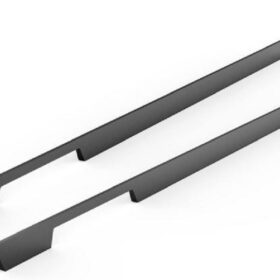Step-by-Step Guide to Working with Circular Aluminum Profiles
Introduction:
In the realm of engineering and design, circular aluminum profiles emerge as a versatile and indispensable material, offering unique advantages and shaping countless innovations. With their exceptional strength-to-weight ratio and corrosion resistance, these profiles empower engineers to create lightweight yet robust structures that stand the test of time.
Step 1: Material Selection:
The choice of aluminum alloy depends on the specific application’s requirements. For example, 6061 aluminum alloy combines high strength with excellent machinability, while 7075 aluminum alloy provides superior strength and stiffness.
Step 2: Cutting Profiles:
Circular aluminum profiles can be cut using specialized tools such as circular saws or band saws. Ensure clean and precise cuts to minimize further processing steps.
Step 3: Deburring:
Remove any sharp edges or burrs from the cut profiles using a deburring tool or sandpaper to prevent injury and ensure a smooth surface finish.
Step 4: Bending Profiles:
Circular aluminum profiles can be bent to create curved shapes using a bending machine. Determine the correct bending radius and apply gradual force to avoid kinking or cracking.
Step 5: Joining Profiles:
Welding, riveting, or mechanical fasteners can be used to join circular aluminum profiles. Weld joints require specialized equipment and proper technique to ensure structural integrity.
Step 6: Finishing:
Surface treatments such as anodizing or powder coating protect circular aluminum profiles from corrosion and enhance their aesthetic appeal. Anodizing creates a durable oxide layer, while powder coating provides a wide range of color options.
Additional Tips:
– Use appropriate safety gear, including gloves and eye protection, when working with circular aluminum profiles.
– Always refer to the manufacturer’s specifications for specific processing guidelines.
– Practice proper handling techniques to avoid bending or scratching the profiles.
– Consider using jigs or fixtures to ensure consistent and accurate results.
Conclusion:
By following these step-by-step guidelines, engineers and designers can harness the full potential of circular aluminum profiles, unlocking new possibilities in design and engineering. From intricate structures to industrial equipment, the versatility and durability of these profiles make them an essential material for a wide range of applications. By embracing the techniques outlined in this guide, professionals can create innovative and long-lasting solutions that push the boundaries of engineering excellence.
-
2024-09-14Exploring the Different Types of Modern Closet Door Pulls and Their Applications
-
2024-09-14How Cabinet Door Pull Handles Support High-Traffic Areas
-
2024-09-06Cost-Benefit Analysis of Investing in High-Quality Long Wardrobe Door Handles
-
2024-09-04How Flat Cabinet Handles Enhance Modern Interior Design
-
2024-11-29Top Trends in Modern Kitchen Cabinet Pulls for 2024
-
2024-11-28The Ultimate Guide to Modern Kitchen Cabinet Pulls- Materials, Styles, and Tips
-
2024-11-27Elevate Your Kitchen Design with These Must-Have Modern Cabinet Pulls
-
2024-11-26Sleek and Stylish- The Best Modern Kitchen Cabinet Pulls for a Contemporary Look






